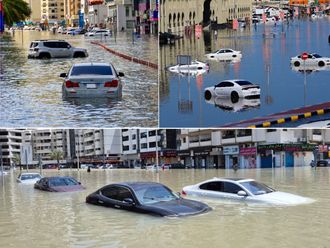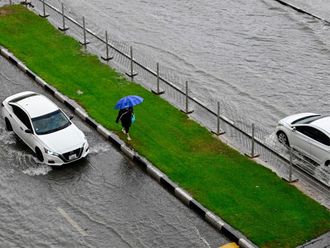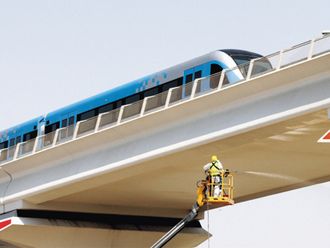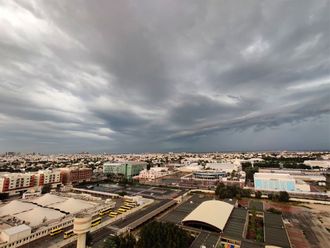
Dubai: New five-metre buffer zones between moving vehicles to be enforced next month via Dubai speed radars are a first step toward reducing tailgating — the third biggest killer on UAE highways, say traffic safety experts.
But the mandatory distance of five metres proposed in Dubai should be extended to greater lengths in future to give motorists more time and distance to brake more safely, experts suggest.
Five metres falls relatively short of the time and distance needed by motorists to react and brake to avoid colliding with motorists travelling ahead in the event of an accident. Distances of at least 40 metres between vehicles travelling at 80km/h marked through the use of chevrons painted on roads are common safety measures adopted in Canada, the United States and Europe.
Studies have shown the use of chevrons helped decrease tailgating accidents by more than 50 per cent, a dip attributed to the minimum 40-metre driving buffer.
Maj Gen Mohammad Saif Al Zafein, Assistant to the Dubai Police Chief for Operations Affairs, said earlier that the new radar enforcement is being designed to reduce accidents caused by tailgating.
As part of its new “Keep a safe distance” campaign, Dubai Police will usher in new fines of Dh400 in July for tailgating motorists who are photographed by radars driving within five metres of the vehicles ahead of them. The measure is the first step in the fight against tailgating, an endemic problem which claimed 26 lives in Dubai last year and another 11 lives so far this year, say police.
Last year, Dubai traffic authorities issued 69,964 fines for tailgating and so far this year, another 19,975 following-too-closely tickets have been penned by roadside officers on their beat.
Thomas Edelmann, founder and managing director of RoadSafetyUAE, said while on the right track, the minimum five-metre distance needs to be lengthened by up to eight times to reflect standard safety distances abroad.
“Five metres is OK in stop-and start traffic,” said Edelmann, “but if you’re going 100 kilometres on Shaikh Zayed Road...five metres does not make any sense.”
He noted that in Germany, for example, mobile police units use the element of surprise with distance-tracking radar guns to nab motorists who tailgate at high rates of speed.
“We know from statistics, tailgating is the number three killer on our roads [in the UAE],” Edelmann said.
Robert Hodges, CEO of Emirates Driving Institute, is an internationally recognised road safety expert who has written remedial training manuals for government traffic regulators in the United States and Europe.
He also oversees 3,000 driving instructors in the UAE.
Hodges lauded Dubai Police for working to stem tailgating but suggested five metres falls short of internationally accepted road safety standards.
“I welcome the initiative, it’s a good start,” said Hodges, “but I easily recommend police study stretching the five metres to a greater distance. My professional opinion is that five seconds is nowhere near enough. Road safety experts around the world maintain the two- to three- second rule.”
The two-second rule, for example, shows that a driver who leaves two seconds of travel time at 80km/h between their own vehicle and the car in front of them creates 44.5 metres of distance, which is a universally accepted safety gap in which to stop in the event of an emergency.
“In the two seconds, it will take the human brain one second to analyse and react and another second to do the braking that needs to be done,” Hodges told Gulf News on Wednesday.













